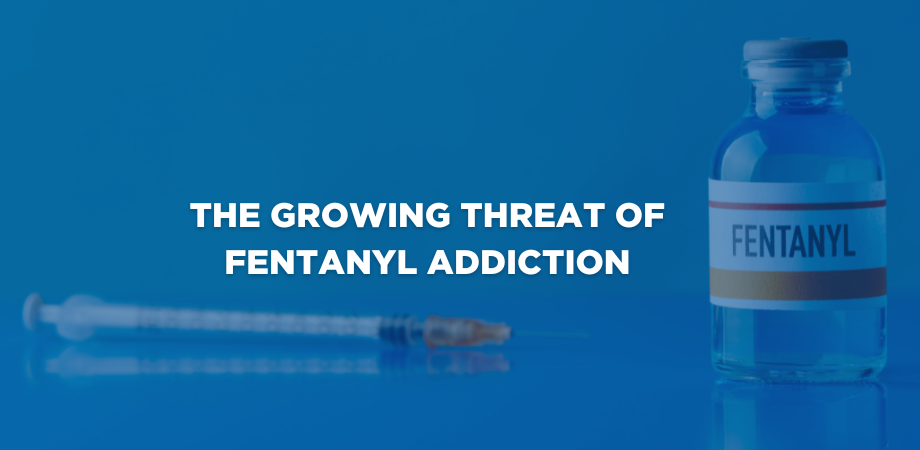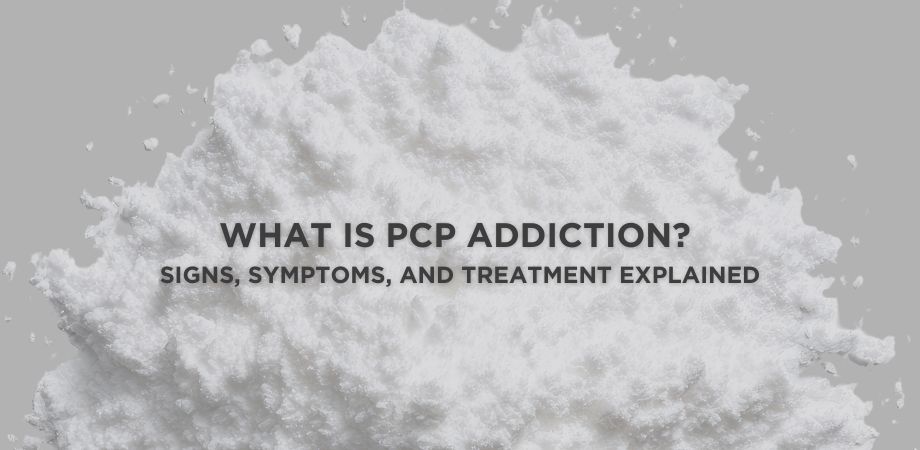Introduction
Antihistamines are among the most widely used medicines worldwide. They help relieve allergies, itching, sneezing, and rashes, and some types are even used as sleep aids. When taken correctly, they are safe and effective. However, like many over-the-counter medications, antihistamines are not entirely risk-free.
In recent years, growing cases of misuse and dependency have raised serious concerns among healthcare professionals. Some people use them to relax, reduce anxiety, or aid sleep, often without realizing the potential harm of long-term use. Over time, this can lead to tolerance, emotional dependence, and physical side effects.
This blog aims to explore the hidden risks of antihistamine misuse, how dependency develops, and the steps to prevent or manage it safely. By spreading awareness, we can help people make informed choices and promote the responsible, medically guided use of these common yet powerful medications.
What Are Antihistamines?
Antihistamines are medicines that help control allergic reactions. They block histamine, a chemical released by the body that causes sneezing, itching, watery eyes, and swelling. By stopping histamine from binding to its receptors, these drugs ease discomfort and help people breathe better.
There are two main types: first-generation and second-generation antihistamines.
First-generation drugs, such as diphenhydramine, chlorpheniramine, and promethazine, are known for their strong sedative effects. They can make users drowsy and are sometimes misused for their calming or sleep-inducing properties.
Second-generation drugs, including cetirizine, loratadine, and fexofenadine, treat allergies without heavy sedation and are considered safer for daytime use.
Antihistamines work by blocking histamine (H1) receptors in the brain and body. Some cross the blood-brain barrier, creating mild euphoria or drowsiness, effects that can lead to misuse.
Recent Indian studies highlight growing misuse of over-the-counter antihistamines among young adults seeking sedative effects. Used properly, these medicines relieve allergies safely. But unsupervised or frequent use increases the risk of dependence and cognitive side effects over time.
Can Antihistamines Be Addictive?
Antihistamines are not considered highly addictive, but dependence can develop, especially with first-generation drugs like diphenhydramine or promethazine. These medicines produce strong sedative effects, which some people begin to rely on for sleep or relaxation. Over time, their bodies may adjust, requiring higher doses to feel the same effect.
This creates a pattern of tolerance and dependence. People might feel restless or anxious when they stop taking the medication, leading them to use it again. While this is not a classic physical addiction like opioids or alcohol, it can still cause serious health and emotional challenges.
Physical dependence occurs when the body adapts to the drug and needs it to function normally. Psychological addiction, however, is when a person believes they can’t manage stress or sleep without it. Both can exist together, deepening the problem.
Misuse often begins innocently; someone takes antihistamines to fight insomnia, ease anxiety, or escape stress. Gradually, the habit turns into daily use. In some cases, users mix them with alcohol or other sedatives to feel stronger calmness or mild euphoria.
A case study from All India Institute of Medical Sciences (AIIMS), New Delhi, described pheniramine abuse and dependence associated with psychiatric symptoms. The report outlined heavy pheniramine use over years, delusions, aggression, and even seizures in one patient.
Although the risk of addiction is lower than many other drugs, prolonged or unmonitored use of antihistamines can quietly lead to dependence that requires medical and psychological support to overcome.
Signs and Symptoms of Antihistamine Misuse
Antihistamine misuse often begins quietly. At first, it may look like normal allergy medicine use, but over time, patterns change. People start taking higher doses or using the drug for reasons other than medical need, such as to fall asleep or calm their mind. Recognizing these signs early is important to prevent long-term harm and emotional dependence.
There are three main types of symptoms: behavioral, physical, and psychological. Each shows how the drug affects both the body and mind.
Behavioral Signs
These involve changes in daily habits or medication patterns.
- Taking larger or more frequent doses than prescribed
- Using antihistamines even when symptoms are gone
- Visiting multiple pharmacies to buy extra medicine
- Hiding or denying use from family members
- Mixing antihistamines with alcohol or painkillers for a stronger effect
Physical Signs
These appear as visible changes in the body or energy levels.
- Constant drowsiness or fatigue
- Dry mouth and blurred vision
- Poor coordination or confusion
- Constipation and slow reflexes
- Headaches or dizziness after frequent use
Psychological Signs
These reflect emotional and mental dependence.
- Relying on antihistamines for sleep or relaxation
- Feeling anxious or restless without the drug
- Mood swings or irritability
- Trouble focusing or remembering things
- Using the drug to escape stress or sadness
When these signs appear together, they signal misuse that should not be ignored. Medical guidance and structured therapy can help individuals break the cycle safely and restore balance in their daily lives.
Risk Factors for Antihistamine Dependency
Not everyone who takes antihistamines develops dependence. Yet, certain conditions make some people more vulnerable than others. Understanding these risk factors can help prevent misuse before it turns into a problem.
One of the main causes is chronic or prolonged use. People who take antihistamines daily for allergies, skin problems, or insomnia may start increasing their dose gradually. Over time, the body gets used to the medicine and demands more for the same relief. This slow increase often goes unnoticed until dependency develops.
Another important factor is a past history of substance abuse. Individuals who have struggled with alcohol, opioids, or sleeping pills are more likely to misuse antihistamines. They may turn to these medicines as a “safer” way to relax, but the risk remains. The sedative effects of first-generation antihistamines can be especially tempting for those seeking calm or escape from anxiety.
Easy access also plays a huge role. In India, many antihistamines are available over the counter, with no prescription required. This convenience encourages self-medication. People may take higher doses without realizing the harm they are causing to their liver, brain, and nervous system.
The danger becomes greater when antihistamines are combined with other central nervous system depressants. Mixing them with alcohol, opioids, or benzodiazepines intensifies sedation. It can slow breathing, lower heart rate, and cause confusion or blackouts. Such combinations are among the most common reasons for accidental overdose.
Certain groups, such as young adults under stress or elderly individuals managing multiple medications, face even higher risks. In fact, a study on the “South Asian cocktail” reported that injecting users often mix antihistamines with opioids and benzodiazepines in Nepal, raising health risks dramatically.
Recognizing these risk factors is the first step toward prevention. Proper education, medical guidance, and early intervention can help reduce misuse and protect individuals from long-term dependence or serious health complications.
Managing and Preventing Antihistamine Misuse
Preventing antihistamine misuse begins with responsible use and awareness. These medicines should always be taken in the recommended dose and only for a short period, unless a doctor advises otherwise. Self-medicating for sleep, stress, or anxiety often leads to hidden dependence.
Before starting any antihistamine, it’s best to consult a doctor or pharmacist. They can suggest the right type, dose, and duration based on your health needs. If symptoms continue for weeks, a medical evaluation is essential. Long-term use without supervision can strain the liver, slow reflexes, and harm memory.
For those already misusing these drugs, help is available. The safest way to stop is through gradual reduction under medical guidance. Abruptly quitting may lead to restlessness, confusion, or rebound insomnia. Doctors can design a tapering plan and recommend therapies for anxiety or sleep problems.
If a loved one is showing warning signs, early intervention matters. Encourage open discussion and seek help from an addiction specialist or a rehabilitation center.
At Alpha Healing Center, clients receive medical detox, behavioral therapy, and family counseling designed to break this cycle safely. With guidance, awareness, and ongoing support, full recovery from antihistamine misuse is absolutely possible.
Managing and Preventing Morphine Addiction
Morphine can be a lifeline for people in severe pain, but misuse can quickly turn it into a threat. The best way to prevent morphine addiction is by using it responsibly under medical supervision and with full awareness of its risks.
1. Importance of Strict Adherence to Prescribed Guidelines
Always take morphine exactly as prescribed. Never increase the dose, even slightly, without consulting a doctor. Following dosage schedules strictly prevents tolerance and dependency from forming.
Doctors prescribe morphine after carefully assessing pain levels, body weight, and past medical history. Ignoring these limits or using someone else’s prescription can make the body dependent in just a few weeks.
2. Strategies for Safe Use
Safe use begins with open communication and accountability.
- Regular medical check-ins: Visit your doctor often to review dosage, pain levels, and any withdrawal symptoms.
- Use the lowest effective dose: If pain is manageable, taper down under medical advice.
- Avoid self-adjusting doses: Even one unapproved increase can trigger dependency.
- Secure storage: Keep morphine locked away to prevent accidental or unauthorized use.
- Never mix substances: Avoid alcohol, sedatives, or sleeping pills unless your doctor approves.
These strategies help reduce the brain’s exposure to opioids, lowering the chance of addiction while still managing pain effectively.
3. Steps to Take if Addiction Is Suspected
If you or someone you love shows signs of misuse like craving, doctor shopping, or mood swings, seek help immediately. Start with a medical evaluation or an addiction assessment from a licensed professional.
Treatment may involve detox, therapy, and rehabilitation in a specialized center like Alpha Healing Center, where recovery focuses on both physical healing and emotional balance.
Early recognition and prompt action can turn dependence into recovery before it becomes destructive.
Treatment Options for Morphine Addiction
Treatment for morphine addiction focuses on detoxifying the body, retraining the mind, and rebuilding daily life. The process begins with an assessment by medical professionals to understand the level of dependence and any co-existing issues like depression or anxiety.
A combination of medical detox, behavioral therapies, and aftercare support forms the foundation of long-term recovery. At this stage, continuous monitoring ensures that withdrawal is safe and manageable.
Role of Medical Detox and Supervised Tapering
Medical detox is the first critical step. It helps clear morphine from the body while minimizing withdrawal symptoms such as anxiety, muscle pain, or restlessness.
Doctors may use supervised tapering, where the dose is gradually reduced instead of being stopped suddenly. This method prevents severe withdrawal reactions and keeps the process medically safe.
At Alpha Healing Center, the medical team uses personalized detox plans crafted by experienced doctors, psychologists, and wellness experts. Continuous monitoring, round-the-clock nursing care, and evidence-based withdrawal management help each client move through detox safely and comfortably.
3. Support Options After Detox
Once detox is complete, real recovery begins. Ongoing support helps prevent relapse and rebuild a healthy, substance-free lifestyle.
Key support options include:
- Medication-Assisted Treatment (MAT): Drugs like buprenorphine or naltrexone reduce cravings and help maintain stability.
- Psychological therapy: Cognitive Behavioral Therapy (CBT) and Motivational Enhancement Therapy help individuals understand and change addictive patterns.
- Support groups: Sharing experiences in groups like Narcotics Anonymous builds confidence and accountability.
- Family counseling: Involves family members to restore trust and communication at home.
At Alpha Healing Center, these approaches come together through a holistic, client-centered program. Our team not only treats addiction medically but also heals emotional wounds through yoga, mindfulness, and psychotherapy, helping clients reconnect with life, family, and purpose.
Every patient is guided by a multidisciplinary team that treats addiction with compassion and clinical excellence. Our mission is simple: to help your loved one recover, restore balance, and rediscover peace.
Myths and Facts About Morphine Addiction
Many people still believe morphine addiction is rare or only happens to those who misuse the drug intentionally. In truth, addiction can develop quietly, even under medical use. Breaking these myths is key to encouraging early help and reducing stigma.
Common Myths vs. Facts
- Myth: Prescription drugs like morphine are always safe.
Fact: Morphine is safe only when taken exactly as prescribed. Misuse or prolonged use can quickly lead to dependence. - Myth: Addiction is a moral failure or lack of willpower.
Fact: Addiction is a medical condition that alters brain chemistry and needs professional treatment, not judgment. - Myth: You can stop morphine anytime if you really want to.
Fact: Sudden withdrawal can cause severe symptoms. Safe recovery requires medical detox and supervision. - Myth: Only people with weak character become addicted.
Fact: Anyone, regardless of background, can develop addiction under stress, pain, or prolonged exposure.
Breaking these misconceptions helps families approach morphine addiction with empathy and understanding. At Alpha Healing Center, treatment focuses not only on recovery but also on restoring dignity, breaking stigma, and rebuilding a life free from shame and dependence.
Conclusion
Morphine is a powerful medicine, but its misuse can quickly lead to dependence and addiction. Using it responsibly, only under medical supervision, is the safest way to manage pain without risking harm.
If you or someone you love shows signs of morphine misuse, seek professional help immediately. Early intervention makes recovery easier and lasting.
At Alpha Healing Center, our expert medical team provides compassionate, evidence-based care to help individuals break free from addiction and rebuild their lives.
Reach out today to begin the journey toward healing, balance, and a drug-free future.




